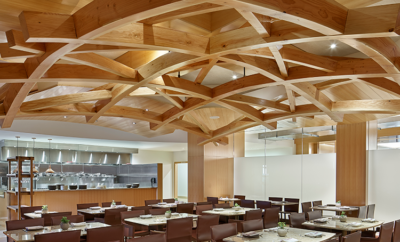 COURTESY PHILLIPS/PHILLIPS.COM
COURTESY PHILLIPS/PHILLIPS.COM
Design
Lighting the Way: The Best Early Modern Lamps
When we consider modern design, the emphasis is often on the decade or so following World War II. The reasoning, which is justified, can be condensed into a few critical ideas, including the necessity of rebuilding (and re-furnishing) Europe, the enhanced abilities and possibilities of mass-production, and a general philosophical inclination toward the new and the future. Too often, it’s as if there is an invisible frontier that excludes earlier objects.
In fact, early modernism is ripe for discovery. Many of the lights fixtures featured here are remarkably under-appreciated or even unknown, even though their aesthetic innovations were repeatedly duplicated or interpreted in succeeding decades, up to today. I suspect that even readers familiar with certain models will be surprised at how early their designs date. None of the designers are obscure, and their contributions to either design or architecture of the twentieth century is considered. Several of the lights boast new technologies (notably bulbs), materials, or production possibilities of the day.
Perhaps the key factor uniting the examples featured is that they are still remarkable today, whether isolated on a museum plinth or in a contemporary interior. They all reflect a fierce rejection of the reigning styles of their era and the assertion of a new aesthetic sensibility, often accomplished “simply” by dismissing ornamentation. All have an overt sculptural presence even if the forms are simple, the materials are modest, or the surfaces are unadorned.
Of course this list is highly subjective and certainly not exhaustive. In the end, it is about a desire to retreat behind the 1945 frontier and illuminate a group of iconic, or deserve-to-be-iconic, light fixtures from the first half of the twentieth century.
Frank Lloyd Wright (1867–1959) Taliesin III table lamp 1933

© RTM THE FRANK LLOYD WRIGHT FOUNDATION
LET’S PUT ASIDE ANY ambivalence about posthumous reissues, and the sticky questions of authorship and purity that they raise. In 2015, to much fanfare in the design world, Yamagiwa, a Japanese lighting manufacturer, reissued a collection of lighting that Wright had designed for his Taliesin complex in Wisconsin, to this day one of the most important twentieth-century architectural landmarks in the United States. The design origins of the light relate to a pendant lamp that Wright designed about 1933 for the Hillside Playhouse, a theater at Taliesin. While the architect allegedly drew inspiration from a tree trunk sprouting branches, leaves, and flowers, the design is decidedly geometric, with any allusions to nature rendered in squares and rectangles. The Frank Lloyd Wright Foundation has been granting licenses to manufacturers since 1985 to produce products for the commercial market. Yamagiwa realized/reissued the Taliesin lighting collection in three sizes, from table lamps to a floor model in various woods.











